Recent Articles
Popular Makes
Body Types
5 Best Vans With Self-Driving Features for 2022
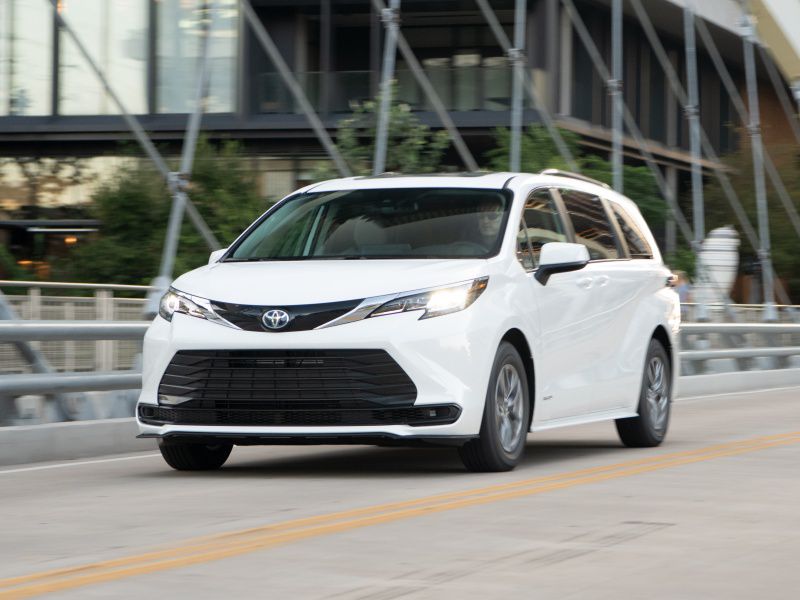
2021 Toyota Sienna LE ・ Photo by Toyota
Minivans are in decline. Many major automakers have exited the segment, and even the survivors fail to outsell the leading crossover SUVs. But minivans’ incredible space continues to make them desirable for many families. If only there were someone else to drive them around for you.
Well, thanks to modern self-driving features, today’s minivans can handle many driving tasks by themselves. Adaptive cruise control lets them accelerate and brake to match the car in front of them. Lane-keeping assistance turns the steering wheel in your hands to keep the van on course. Automatic emergency braking steps in for emergencies when a collision is imminent. Blind-spot monitoring looks over your shoulder to alert you if you’re going to change lanes or back up into the path of another vehicle. This isn’t full self-driving, true, but it means you have less to worry about when you’re behind the wheel. Your minivan is helping out. Here are the five best vans with self-driving features for 2022, sorted by price.
1. 2022 Kia Carnival
The 2022 Kia Carnival is this year’s brand-new replacement for the Sedona. Kia likes to say the Carnival is a “multipurpose vehicle” rather than a minivan, but it’s a fairly traditional model: two sliding doors, up to eight seats, a V6 engine, and front-wheel drive. It has dressier front and rear ends than most vans, but a similar silhouette.
The Carnival stands out from the pack for its high-end interior, which looks more like a luxury sedan’s than a normal van’s. That means excellent materials and build quality, along with a sophisticated infotainment system. And despite that, the Carnival costs less than its competitors. A long warranty is another famous Kia perk. This car-like dashboard design creates less storage space than more utility-focused vans, though.
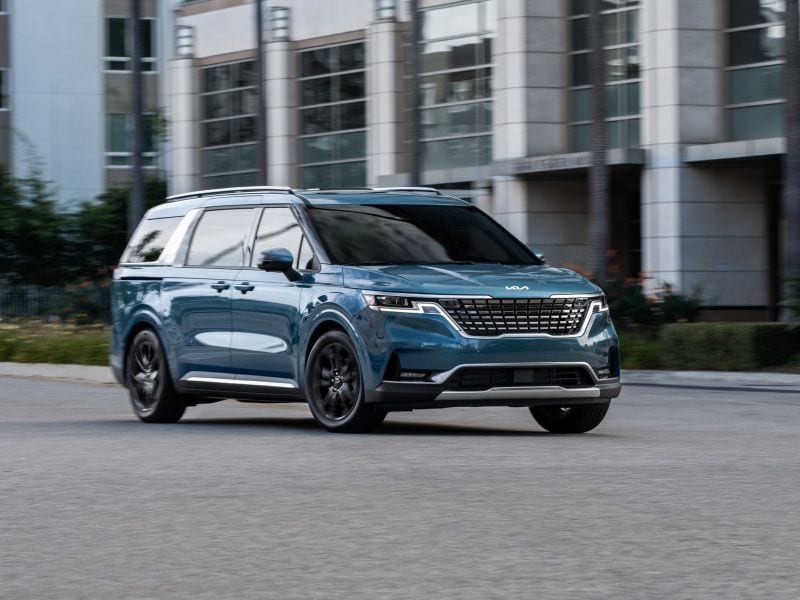
Photo by Kia
Kia Carnival Self-Driving Features
The Carnival is priced from $32,100. Every Carnival includes a number of important self-driving features: a forward-collision warning with automatic emergency braking and pedestrian detection, a lane-departure warning with lane-keeping steering assistance, and driver-drowsiness monitoring.
Blind-spot monitoring with a rear cross-traffic alert is included on all but the base model. Adaptive cruise control skips the two base models, but it’s available for as little as $37,600, paired with a more sophisticated automatic emergency braking system that also identifies bicyclists. The top trim levels add rear automatic braking and a blind-spot camera mirror.
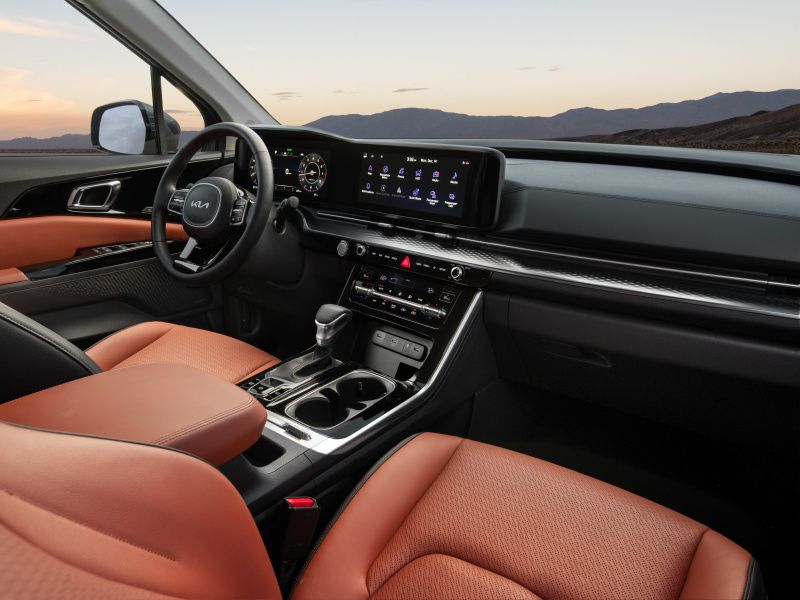
Photo by Kia
2. 2022 Honda Odyssey
The 2022 Honda Odyssey is the driver’s minivan. Its steering, handling, accelerator, and brakes are tuned to dial out the slop, making this van more rewarding to operate. We don’t mean to overstate its merits, even compared to some past Odyssey generations that were even sportier, but it stands apart from its competitors.
It’s also highly functional. The Odyssey has extra-comfortable rear seating, sensible ergonomics, tons of cargo and storage space, and a comfortable ride. The infotainment screen is small by today’s standards, topping out at 8 inches, and the dashboard design isn’t as posh as the Kia Carnival’s. But the Odyssey is a standout blend of sporty performance, everyday comfort, and top-notch functionality.
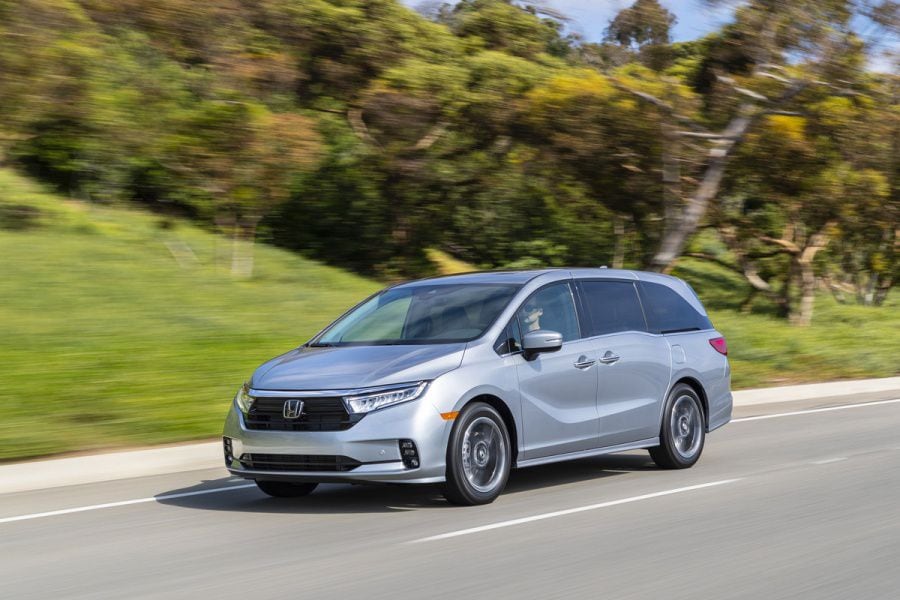
Photo by Honda
Honda Odyssey Self-Driving Features
The Odyssey is a pretty good deal, too, starting at just $32,290. That’s with a lot less standard equipment than the similarly priced Carnival, to be sure, but the self-driving features mostly come standard even on the base model.
These features include a forward-collision warning with automatic emergency braking and pedestrian detection, a lane-departure warning with lane-keeping steering assistance, and even adaptive cruise control. Blind-spot monitoring with a rear cross-traffic alert costs extra, pushing the 2022 Odyssey’s price to $35,690 for a higher trim level.
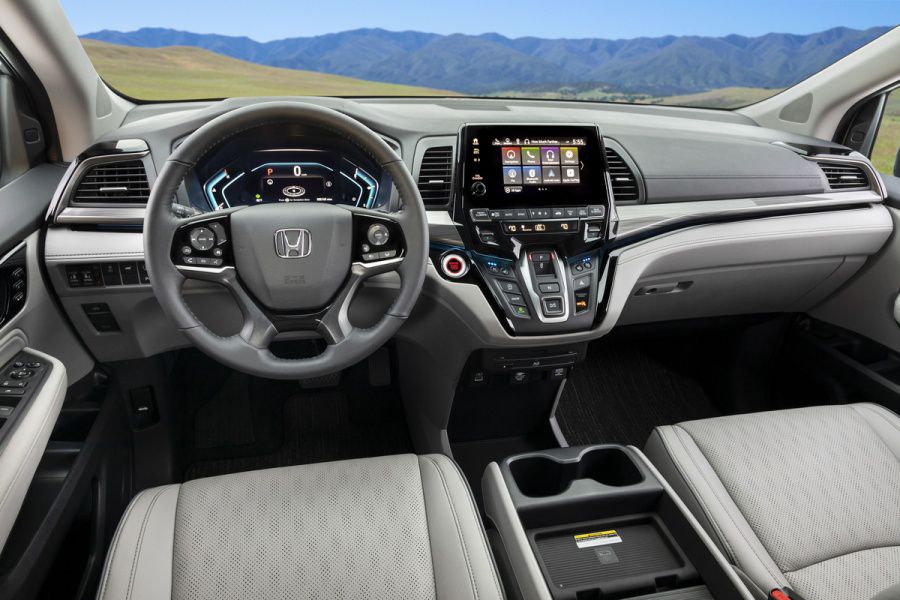
Photo by Honda
3. 2022 Toyota Sienna
Toyota bucked convention when it redesigned the Sienna minivan for 2021. It could have easily followed a safe, familiar formula of a V6 engine and no one would have batted an eye. Instead, Toyota made every new Sienna into a hybrid that combines electric motors with a four-cylinder gasoline engine. The result is that the Sienna is noisier than its competitors, but its gas mileage is incredible. Overall, the EPA pegs it at 36 mpg compared with 22 mpg for a non-hybrid minivan like the Honda Odyssey or Kia Carnival. And in stop-and-go conditions, the Sienna will use less than half their gasoline.
Inside, Toyota again steered clear of familiar minivan norms. The Sienna doesn’t let you remove the second-row seats from the van, reducing total cargo capacity (but making it easier to achieve the full manufacturer estimate). But we like the way the new Sienna provides a classy dashboard while still making tons of storage space. And we love its gas mileage even more. Many buyers will also appreciate its optional all-wheel-drive system.
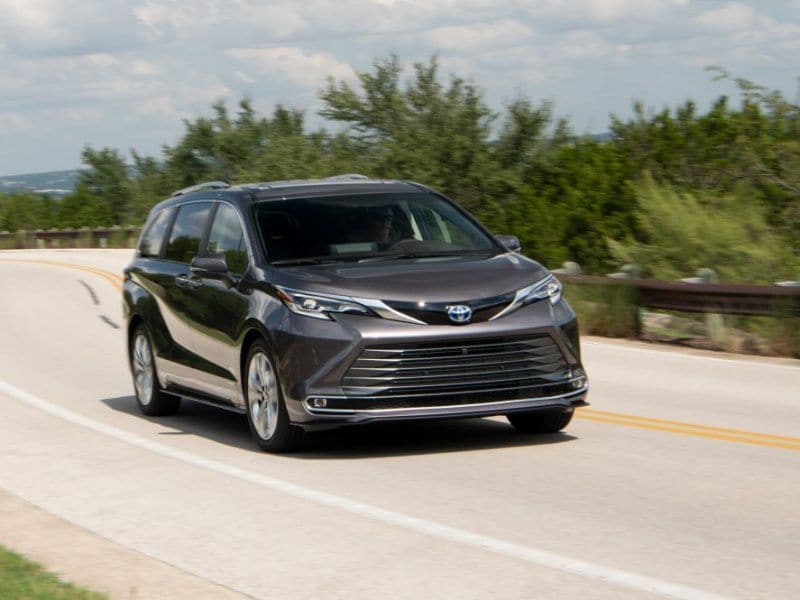
Photo by Toyota
Toyota Sienna Self-Driving Features
The Sienna is priced from $34,560, and it doesn’t just rely on the hybrid powertrain to justify its price tag. It’s also loaded with self-driving features.
Every Sienna includes adaptive cruise control, a forward-collision warning, automatic emergency braking, blind-spot monitoring with a rear cross-traffic alert, and a lane-departure warning with lane-keeping steering assistance. The Carnival and Odyssey may cost less, but each makes you pay extra for at least some of that driver-assistance technology.
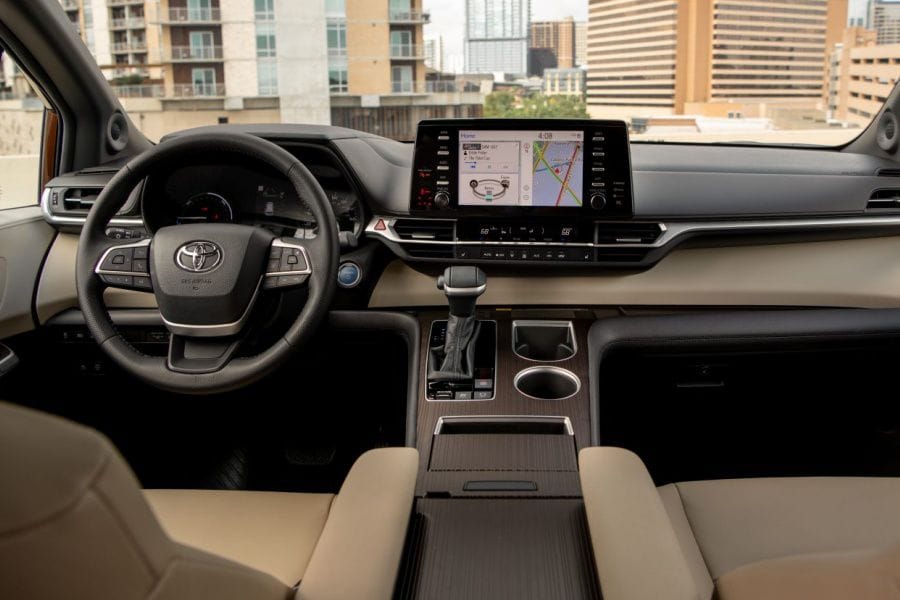
Photo by Toyota
4. 2022 Chrysler Pacifica
The 2022 Chrysler Pacifica is a stylish yet functional minivan with some class-exclusive tricks. Its Stow ’n Go system lets you fold most Pacificas’ second-row seats into in-floor storage bins, letting you convert the van from passenger shuttle to cargo-hauler without needing to remove the seats. While other minivans have the same trick for the third row, no other can do it for the second row as well.
The other Pacifica exclusive is an optional plug-in hybrid powertrain, which lets the van run an EPA-estimated 32 miles using solely electricity if you charge its battery; the Pacifica Hybrid is then rated at 30 mpg once that range is used up. The Pacifica is also only one of two vans to offer AWD. The Pacifica has some foibles, though: It feels heavier to us than its competitors, some of its interior trim is looking dated, the seats are a bit hard, and prices are high.
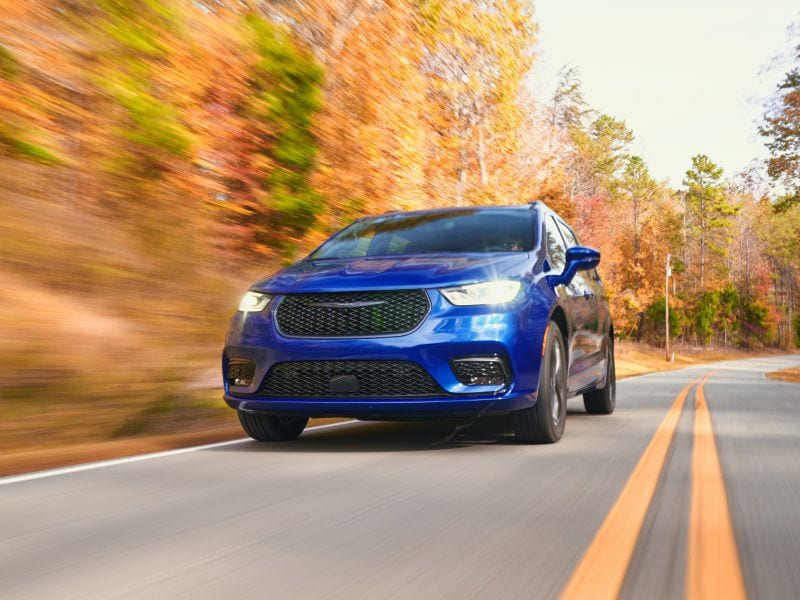
Photo by Chrysler
Chrysler Pacifica Self-Driving Features
The Pacifica’s lofty base price of $37,095 does include lots of self-driving features, at least. Like the Toyota Sienna, the Pacifica comes standard with adaptive cruise control, a forward-collision warning, automatic emergency braking, blind-spot monitoring with a rear cross-traffic alert, and a lane-departure warning with lane-keeping steering assistance.
A class-exclusive self-driving feature, ParkSense Active Park Assist, steers the van automatically for you as you pull into a parking space. Let go of the steering wheel and let the Chrysler navigate its own way into either a parallel or a perpendicular parking spot. You still work the accelerator and brakes, but that’s the easy part of parking.

Photo by Chrysler
5. 2022 Ford Transit Wagon ($42,600)
When a minivan is too mini, the commercial-grade Ford Transit full-size van has rolled out lots of self-driving features as well. The Transit is sold as a passenger van (what Ford calls the wagon) and a cargo van, both of which are massive. Don’t expect to fit this van in your garage.
This van doesn’t have posh interior detailing and the longest list of family-focused features. But it’s unexpectedly civilized and easy to drive. We especially love its huge side windows, tight turning radius, and unexpectedly agile handling. Of course, if you’re buying this size of vehicle, it’s because you want size — and the Transit has that in spades. Depending on how you configure it, you can seat up to 15 passengers or a smaller number of passengers and more cargo than they could possibly come up with.
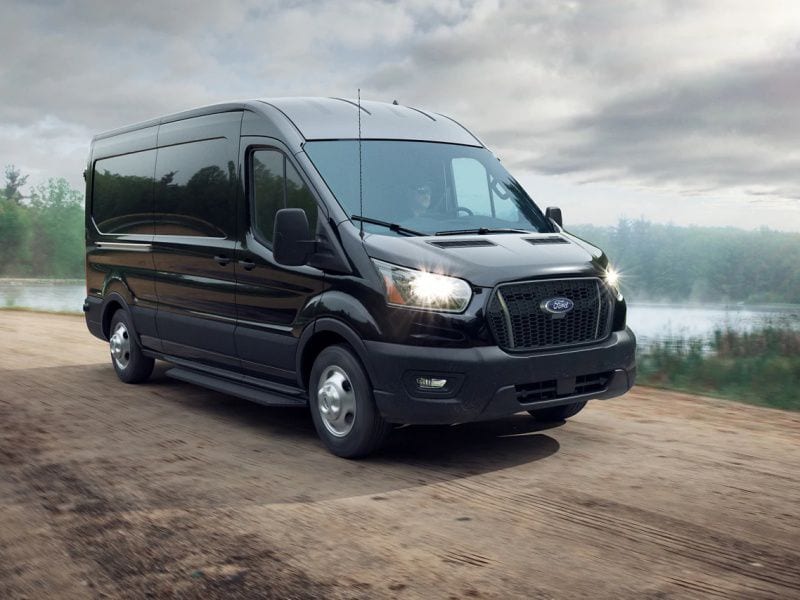
Photo by Ford
Ford Transit Self-Driving Features
Unlike some competitors, the Transit is a thoroughly modern vehicle despite being designed for commercial customers. Every Transit — even the base cargo van — includes a forward-collision warning, automatic emergency braking, and a lane-departure warning with lane-keeping steering assistance.
What’s more, you can upgrade even the base Transit XL model with blind-spot monitoring, a rear cross-traffic alert, and adaptive cruise control. There’s even an optional self-parking system similar to the smaller Chrysler Pacifica minivan’s. Whether you’re kitting out the Transit as a camping van, filling it with children or church parishioners, or loading it with plumbing supplies or Amazon packages, its self-driving features will take some stress out of your day.
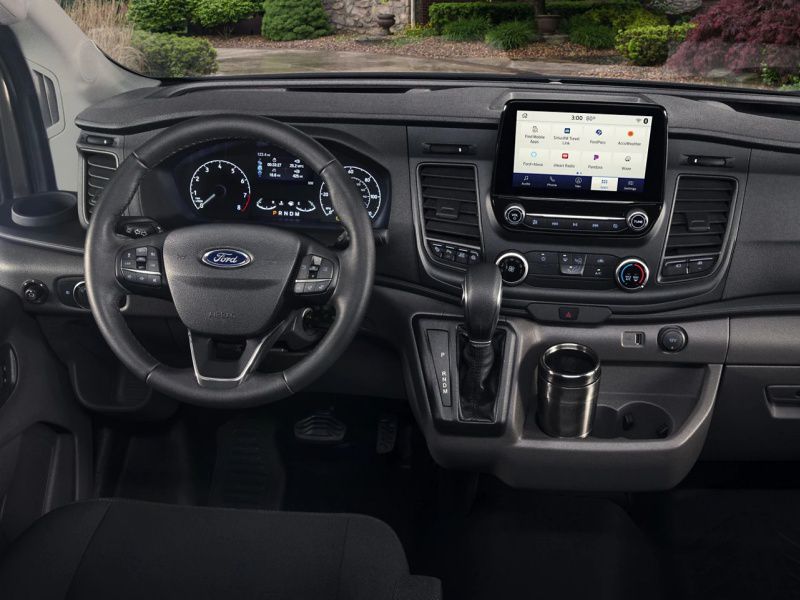
Photo by Ford